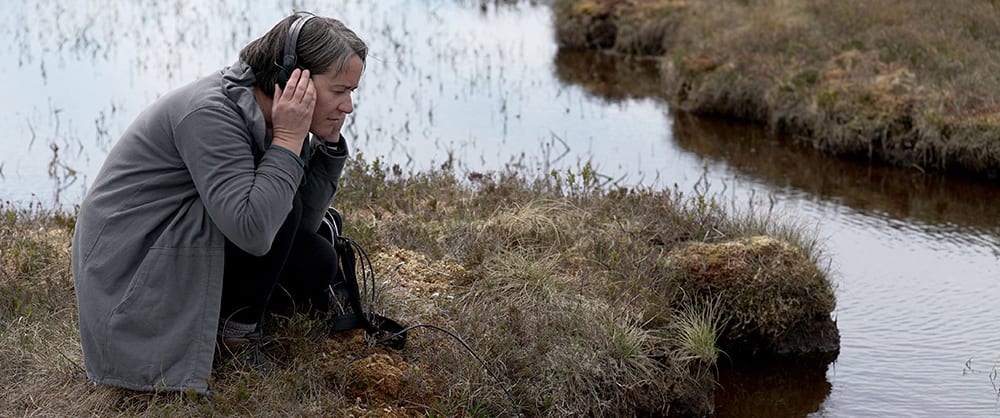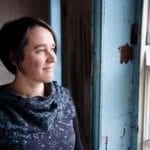Water forms the arteries of the planet.
We are 60% water.
Water is a key ingredient for life, and a key catalyst for the origin of biological life on earth.
What could be a deeper and more direct connection between the planet, other species and each other?
The vast majority of the underwater world is a mystery to us. We can only really access bodies of water, from the shoreline or surface. These edges are our entry points.
I’m searching for different ways to engage with water, and I have chosen to name my research project ‘Re-wilding Water Data’.
Re-wilding is defined as follows, on the ‘Rewilding Europe’ website
“Rewilding is a progressive approach to conservation. It’s about letting nature take care of itself, enabling natural processes to shape land and sea, repair damaged ecosystems and restore degraded landscapes. Through rewilding, wildlife’s natural rhythms create wilder, more biodiverse habitats”
Rewilding Europe
I aim to align my research approach with the spirit of “re-wilding”, by searching for methods to experience different “data sets” by adopting a non-anthropocentric viewpoint and implementing methods derived from my artistic practice. Re-wilding Water Data attempts to shift towards embodied methods that encourage the emergence of a deeper awareness, through durational, process-led enactments.
I wish to entangle the orientation and end-points of some of the existing water monitoring methods, with a more poetic, sensorial and eco-holistic set of tactics that explore not just how we ‘gather’ such data but the methods by which we process and collectively experience it.
My primary way into this is through processes of listening. One example being durational, underwater listening with hydrophones. I aim to create shared listening experiences through a series of participatory ‘Deep Listening Walks‘.

Listening closely instils a sense of connection with a location; an expanded experience of a place and the other species cohabiting there. Intense and immersive listening experiences have had a deep effect on how I relate to the non-human world and contributed to my increased sensitivity to the impact humans have on the non-human.
Water monitoring techniques such as regular sampling and testing can be used to generate datasets on the condition or health of a water body. This can reveal gradual changes over time, aswell as sudden events that ‘stress’ the aquatic environment, which can be important for making cases for environmental protection policies. However, often this is data is not so accessible to the public, or easily readable. I make a case for the importance of regularly listening to bodies of water, and the positive impact this may have on the condition or health of a water body.
An example of a practice of listening to the condition of the water is that of the Musicians of Torba Province, Vanuatu referenced on the BBC Radio 4 series “The last songs of Gaia”. The Women of this community make music together in the sea by slapping their hands onto the surface of the water in rhythms, creating sounds similar to that of a dolphin fin slapping the surface of the water. This act of making music together in the sea extends their understanding of the condition of the underwater coral, as the acoustics of the water changes if the coral is becoming degraded. This act of collective music making in water, is interconnected with an enquiry into the health of the submerged ecosystem through the act of listening, being in dialogue, with the water body; a conversation between humans and coral through the medium of water and sound. A link to an example of this enactment is here. I sense a relationship between this increased sensitivity to acoustics as a means to become more aware of ones surroundings, and the bio-acoustic navigational practices of bat or dolphin echolocation.
The artist and researcher, Jana Winderen specialises in underwater listening and recording. She has documented a community of river dwelling people in Thailand who listen underwater by putting one end of an oar into the water and placing the other end in contact with their ear to listen using bone conduction. Underwater sounds travel through solid objects, and can be listened to through a solid medium. Listening to the sounds of fish and crustaceans helps inform the community on sustainable fishing practices. Link to Jana’s images from this series here.
A second strand of my research will bring interdisciplinary methods into play. The combination of artforms is consistently present in my practice, as is the tactile experience of engaging with physical materials, through the craft of ‘making’. I aim to create audio-visual compositions by exposing samples of river sediment onto 16mm film. These compositions will further evolve over time, as the materials shift, move and are erased through playback. As part of the ‘making’ process, I will further experiment with eco-processing by developing film using natural materials (caffenol recipes and plant materials). I would also like explore, sensitively integrating river water into film developing and image exposure. This film-making process will generate sound, as well as imagery, through the exposure and manipulation of the optical soundtrack of the film, thus providing further scope for listening, this time to physical traces of river sediment.
Through these experiments, I aim to hand over some of the data gathering, forming and shaping to material processes. Of course, I am shaping this data-gathering by carrying out and initiating these processes, but I like the idea of letting something else form the data, and for this to be a process far removed from a computer algorithm trained on big data. My choice to prioritise the ‘eco-processing’ of ‘data’ is also a reaction to the energy-thirsty, computer processing requirements of crunching big data.
“matter as vibrant, vital, energetic, lively, quivering, vibratory, evanescent, and effluescent …. In a world of lively matter, we see that biochemical and biochemical-social systems can sometimes unexpectedly bifurcate or choose developmental paths that could not have been foreseen, for they are governed by an emergent rather than a linear or deterministic causality.”
Vibrant Matter : A Political Ecology of Things. Jane Bennett, 2009 p.292
“While staying attentive to the often destructive power imbalance that humans, for the most part, uphold over nature, our authors explore this type of material agency, in varying attempts to rework the relationship between humankind and ‘the other’. They adopt a (micro-) political positioning or ethical imperative that puts ‘non-human agency at the fore’ to challenge forms of water resource exploitation (Alberti 2014, 160; Strang 2014).”
Water, Creativity and Meaning: Multidisciplinary Understandings of Human-water Relationships. Liz Roberts and Katherine Philips, 2018, p.249.
Some examples of Artists who work with natural materials and organic process to create photographs are Lia Girard’s living images created with photosensitive algae, and the camera-less photography of Susan Derges, who uses water to expose large photographic prints.
One aspect of working with data on computers is that the process of ‘smoothing’ the data is often implemented to make ‘sense’ or to ‘map’ or ‘use’ the data… to take away the noise… I have been thinking about allowing the messiness of a data-set to ‘be’ and to find a way to work with this scenario… could the noise be the most interesting aspect of some data sets ?
The results of my research outlined above will involve generating sound, noise, and abstract audiovisual compositions. Here follow some extracts from recordings on the river Frome, Eastville Park, Bristol.

